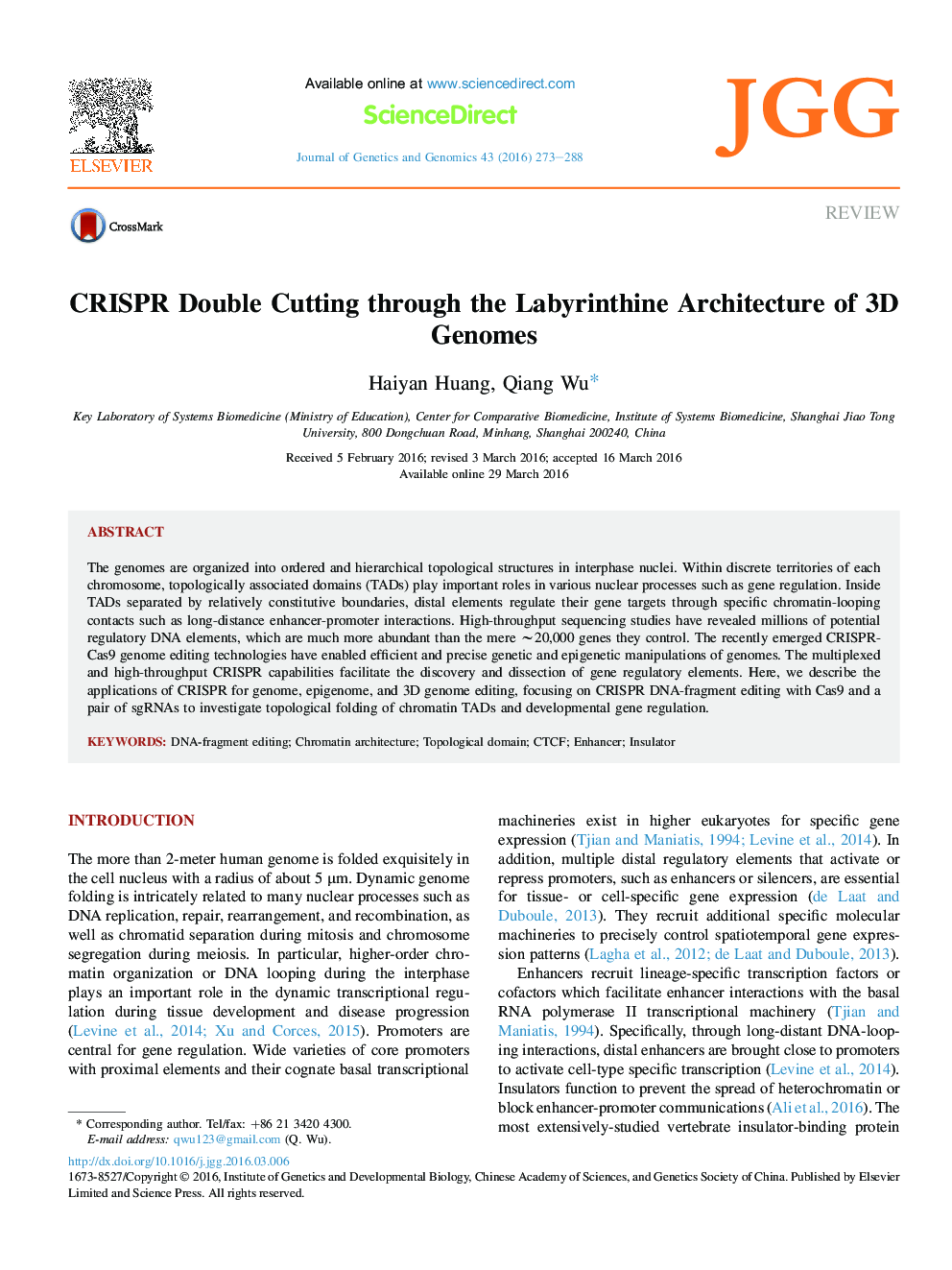| کد مقاله | کد نشریه | سال انتشار | مقاله انگلیسی | نسخه تمام متن |
|---|---|---|---|---|
| 5894015 | 1154287 | 2016 | 16 صفحه PDF | دانلود رایگان |

The genomes are organized into ordered and hierarchical topological structures in interphase nuclei. Within discrete territories of each chromosome, topologically associated domains (TADs) play important roles in various nuclear processes such as gene regulation. Inside TADs separated by relatively constitutive boundaries, distal elements regulate their gene targets through specific chromatin-looping contacts such as long-distance enhancer-promoter interactions. High-throughput sequencing studies have revealed millions of potential regulatory DNA elements, which are much more abundant than the mere â¼20,000 genes they control. The recently emerged CRISPR-Cas9 genome editing technologies have enabled efficient and precise genetic and epigenetic manipulations of genomes. The multiplexed and high-throughput CRISPR capabilities facilitate the discovery and dissection of gene regulatory elements. Here, we describe the applications of CRISPR for genome, epigenome, and 3D genome editing, focusing on CRISPR DNA-fragment editing with Cas9 and a pair of sgRNAs to investigate topological folding of chromatin TADs and developmental gene regulation.
Journal: Journal of Genetics and Genomics - Volume 43, Issue 5, 20 May 2016, Pages 273-288